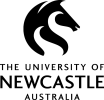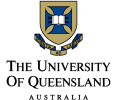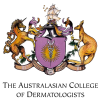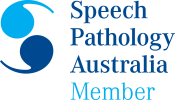The most common first word a child says is Mama or Dada, however recent research at Florida State University looks into how children use on these early words to build a broad and diverse vocabulary.
Children leverage their early world knowledge to help them unlock their language skills, said FSU Assistant Professor of Psychology Arielle Borovsky. Knowing a few related words helps children recognize links between new word meanings, and this could be a very useful strategy for helping children learn vocabulary early in life. This might be part of the explanation for why children begin to start ‘talking up a storm’ between the ages of 18-24 months.
One example is how children first learn to say Mama and Dada which often lead to sister or brother. This is the same with words like toy, which may lead to doll or ball or game. One of the researchers who is part of the recent study, Borovsky, uses the example of a kiwi. Borovsky explains how Toddlers may know different fruits such as apples or peaches, but not kiwi. However, when the child is confronted with a kiwi, it is easier for them to learn this new word, as they are already familiar with related words.
Children start to say words somewhere around their first birthday, Borovsky said. But they’re not a random subset of adult vocabulary. They’re not learning words like stockbroker or bifocals. That’s common sense, but what’s really new is that they are learning these words in clusters and there might be some words that are easier for children to learn and some that are harder.
Borovsky and her colleague’s research involved 32 children aged 2 years old. They looked at each child’s word development by assessing their existing knowledge using a computer program that presented familiar images of items on a screen. As 2 year olds are not always communicative, eye tracking technology was also used to see which images the children recognized. Borovsky and her team also taught the children six new words related to words they already knew. The targets chosen were complicated words in broad categories familiar to children. These categories included drinks, fruits, body parts, animals, clothing and vehicles. The toddlers heard the words used in five different sentences, with accompanying visuals.
Although each child learned the same six words, we used their individual vocabulary survey to identify which three words they already had many neighbours in their vocabulary, and which three had the fewest, Borovsky said. They then tested how well the children understood these new words using eye-tracking technology that measures how quickly and reliably the children looked towards pictures of these new objects when they were named.
To understand what goes wrong, we need to understand how language development works overall,” she said. If we can identify what’s going wrong at an earlier stage, we can get these kids working with speech therapists or special education experts quicker. Says Borovsky.
They found that new words were recognised more easily when the child knew more of the other related words. This suggests we could use a child’s own vocabulary to identify words that are easier or harder for that child to learn at a particular age. This in turn helps us to understand how children learn and develop their vocabulary and identify early warning signs of learning disabilities.
Reference
The post Mama or Dada? Research looks at what words are easiest for kids to learn appeared first on ENT Wellbeing Sydney.










